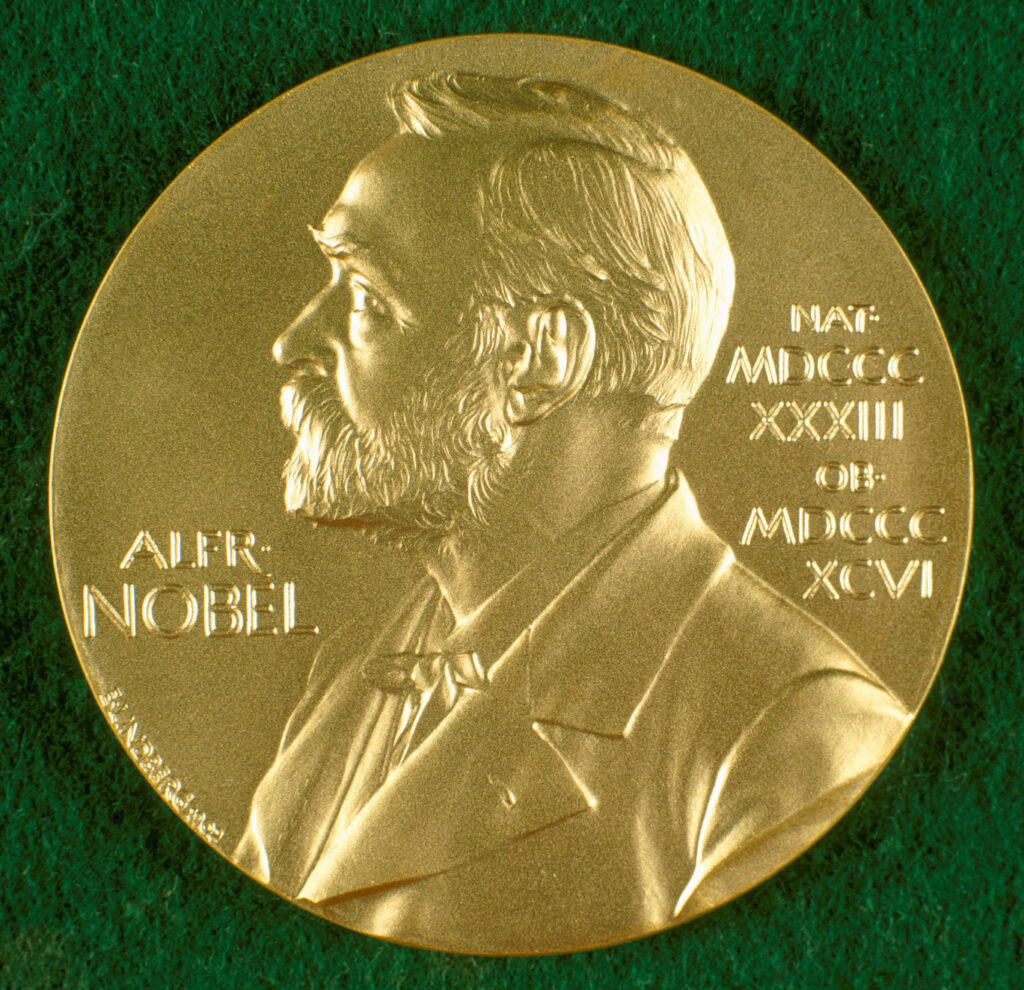Two American scientists won the 2021 Nobel Prize for Medicine on Monday for the discovery of receptors in the skin that sense temperature and touch and could pave the way for new pain-killers.
They are David Julius and Ardem Patapoutian.
This is as German Benjamin List and Scottish-born David MacMillan equally won the 2021 Nobel Prize in Chemistry on Wednesday for developing new tools for building molecules that have helped make new drugs and are more environmentally friendly.
Julius and Patapoutian’s work, carried out independently, has helped show how humans convert the physical impact from heat or touch into nerve impulses that allow us to “perceive and adapt to the world around us,” the Nobel Assembly at Sweden’s Karolinska Institute said.
“This knowledge is being used to develop treatments for a wide range of disease conditions, including chronic pain.”
Patapoutian, who was born in 1967 to Armenian parents in Lebanon and moved to Los Angeles in his youth, learnt of the news from his father as he had been out of contact by phone.
“In science many times it is the things we take for granted that are of high interest,” he said of winning the more than century-old prize, which is worth 10 million Swedish crowns ($1.15 million).
He is credited for finding the cellular mechanism and the underlying gene that translates a mechanical force on our skin into an electric nerve signal.
“(For) us being in the field of sense and touch and pain, this was the big elephant in the room where we knew they existed, we knew they did something very different,” he said.
Patapoutian is a professor at Scripps Research, La Jolla, California, having previously done research at the University of California, San Francisco, and California Institute of Technology, Pasadena.
New York-born Julius, 65, is a Professor at the University of California, San Francisco (UCSF), after earlier work at Columbia University, in New York.
His findings were inspired by his fascination for how natural products can be used to probe biological function and he used capsaicin, the molecule that makes chili peppers spicy by simulating a false sensation of heat, to understand the skin’s sense of temperature.
At a news conference, Julius said the idea for the project came while shopping in the spice aisle of a supermarket when he wondered aloud whether anyone was doing such research, to which his wife replied, “Well then you should get on it.”
A challenge for researchers has been developing treatments that inhibit chronic pain without the blocking the ability of sensors to detect heat, which people need to prevent injuring themselves, he said.
“I think the work that we’re doing … will really help to have a rational approach to developing those kinds of drugs,” he said.
“Understanding the molecules involved, and the cell types involved, gives us clues as to how we can target these pathways to develop drugs that can be used for very specific types of pain situations that lead to hypersensitivity to temperature, or in some cases to touch,” he added.
In a related development, the work of Bejamin and Macmillan on asymmetric organocatalysis, which the award-giving body described as “a new and ingenious tool for molecule building”, has also helped in the development of plastics, perfumes and flavours.
“Organic catalysts can be used to drive multitudes of chemical reactions,” the Royal Swedish Academy of Sciences said. “Using these reactions, researchers can now more efficiently construct anything from new pharmaceuticals to molecules that can capture light in solar cells.”
Catalysts are molecules that remain stable while enabling or speeding up chemical reactions performed in labs or large industrial reactors. Before the laureates’ breakthrough findings at the turn of the millennium, only certain metals and complex enzymes were known to do the trick.
The academy said the new generation of small-molecule catalysts were more friendly for the environment and cheaper to produce, and praised the precision of the new tools.
Before asymmetric catalysis, man-made catalysed substances would often contain not only the desired molecule but also its unwanted mirror image. The sedative thalidomide, which caused deformities in human embryos around six decades ago, was a catastrophic example, it said.
“The fact is, it is estimated that 35 per cent of the world’s total GDP in some way involves chemical catalysis,” it added.
List, 53, said the academy caught up with him while on vacation in Amsterdam with his wife, who in the past had liked to joke that somebody might be calling him from Sweden.
“But today we didn’t even make the joke and certainly didn’t anticipate this – and then Sweden appears on my phone… it was a very special moment that I will never forget,” he said, dialling into the media briefing announcing the winners.
List, 53, is director of the Max-Planck-Institut fuer Kohlenforschung, Muelheim an der Ruhr, Germany.
He and MacMillan share the prestigious 10-million Swedish crown ($1.14-million) prize in equal parts for breakthroughs achieved independently of one another.

